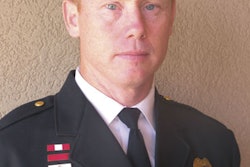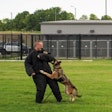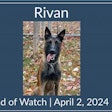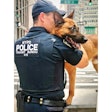The concept of a police tactical unit inspired by military special forces units makes some people uncomfortable. Newspaper and magazine columnists use SWAT as an example of how American law enforcement has become too violent, too paramilitary in nature. Activists like to paint SWAT as storm troopers. And in TV programs and movies, SWAT is portrayed as a group of cowboys who shoot first and ask questions later or ninjas who kill without mercy.
This disdain for SWAT is nothing new.
When Daryl Gates of the Los Angeles Police Department started championing the idea of an elite police unit based on elite military units back in the late 1960s, his superiors were less than enthused. They were especially unhappy about what Gates wanted to call the new unit: "Special Weapons and Assault Team." They didn't like the idea of a police "assault" team, so they compromised on the name, hence "Special Weapons and Tactics."
Not much has changed. LAPD brass is still trying to mold SWAT into a softer, gentler special unit that won't offend the politically correct sensibilities of community activists. But now for one of the few times in its distinguished history, SWAT is actually vulnerable to such pressure.
LAPD SWAT is probably the nation's most storied municipal police unit. This is the unit that slugged it out with the Black Panther Party, that ended the crime spree of the Symbionese Liberation Army in a fiery shootout, that inspired a hit TV show in the mid-1970s. It is made up of arguably the toughest, most athletic, most tactically savvy officers on the LAPD. It is also the law enforcement tactical team that serves as the model for most of the nation's other law enforcement teams.
Therefore, if you want to assess the state of SWAT nationwide, you have to begin with LAPD SWAT. And LAPD SWAT is currently a unit under fire.
LAPD SWAT was, until recently, in the eyes of many people, a unit composed of invincible heroes. After all, the team had never accidentally killed a hostage during a rescue and had never had an officer killed in action. But even heroes have bad days when fortune doesn't shine on them, and no human being is truly invincible.
LAPD SWAT has had some really bad days in the last three years and it now has killed a hostage and lost a team member—Officer Randall Simmons—in action. Consequently, the unit is vulnerable to the whims of the department's brass, starting with Chief William Bratton.
Board of Inquiry
SWAT's trouble began on a summer Sunday in 2005. On that day auto body shop owner Jose Raul Pena snorted a load of cocaine and barricaded himself into his south Los Angeles business with a 9mm Glock and his 19-month-old daughter, Suzie Marie. Shots were fired, SWAT was called, and a standoff began. It ended when a SWAT entry team attempted a daring rescue of the little girl under withering fire from her father, who was using her body as a shield. During the intense gunfight Suzie Marie Pena was shot and killed by a SWAT officer. One of the officers was also seriously wounded in the battle. It was a bad day.
And as often happens with bad days involving the Los Angeles Police Department, community activists got up in arms claiming that SWAT's "aggressive tactics" had resulted in the toddler's death. Oh, and the girl's mother sued the city.
Shortly after this incident, Chief Bratton convened a board of inquiry, reportedly composed mostly of lawyers, to review SWAT's operation. The board's report has yet to be released in any official capacity, except as an executive summary. And when you read the complete version that leaked to the Los Angeles Times and to local radio station KFI last fall, the reason that it was never released is quite apparent: It's explosive.
Bratton empanelled a board that was clearly uncomfortable with the very concept of SWAT, its "elitism," its "insularity," and its "military mindset" with one motive: to remake the team.
On page three of the report, Bratton gives the board its marching orders. "I'm looking to create change in SWAT." So at that point the board had already reached a conclusion, something is wrong with SWAT. Let's overhaul it.
That's a strange conclusion when you consider that SWAT is arguably the most successful unit in LAPD history. Between its founding in 1971 and 2005 (the last year of complete statistics), the unit has been involved in 3,371 incidents; 83 percent of these were resolved without "untoward incident." The statistics show that LAPD SWAT is clearly not broken, so why is Bratton so fired up about fixing it?
Retired Cleveland SWAT commander and PoliceMag.com SWAT columnist Robert J. O'Brien believes that Bratton wants to remake LAPD SWAT in the image of the NYPD's tactical teams. "Bratton [former commissioner of the NYPD] brings with him an East Coast mentality about how fundamentally things should be done. I believe he held off taking on SWAT until something happened and the Pena incident created the opportunity for him to do this."
The Good Stuff
The report is way too complex to address every one of its recommendations in this article. And some parts of it are fair criticism and suggest policy changes that some of the SWAT experts we contacted say are long overdue.
For example, retired LAPD SWAT sergeant Ron McCarthy applauded its recommendation that the team prohibit the use of full-automatic fire during operations. McCarthy says there's really no reason he can think of for a SWAT entry team to engage in fully automatic fire.
Other recommendations thought of as generally acceptable ideas by one or more of the SWAT experts that we contacted included:
- Establishing a program to train designated critical incident commanders
- Improved digital record keeping with integration into Compstat reports
- More training in how to negotiate with the mentally ill
- Placing sergeants in command of entry teams rather than senior officers
- And using SWAT on more crime suppression details
[PAGEBREAK]
Lowering Standards
The report—and the LAPD's response to the report—gets a lot more controversial, however, when it addresses selection and testing of new SWAT personnel. This is also one of the primary areas of concern for other teams founded on the Los Angeles SWAT concept. The question the chiefs of those cities may soon be asking their SWAT commanders is: If this is good enough for LAPD SWAT, then why isn't it good enough for you?
Earning the right to sew an LAPD SWAT badge on your sleeve has never been easy. And it still isn't. But under the recommendations of the board of inquiry—which are now in effect unless overturned by a Los Angeles Police Protective League lawsuit—it is easier.
And the reason for making it easier is perceived by many as an insult to the officers who have tried hard to make the team but failed. Chief Bratton and the board want to diversify the unit.
The panel says that the selection process makes it difficult for women and minorities, specifically African Americans, to make the team.
People who have close connections with the team, including retired SWAT officers, say they are baffled as to why the board of inquiry believed that SWAT is not as ethnically diverse as the city it serves.
"There is a larger percentage of black officers in LAPD SWAT than there are in the population of Los Angeles by percentage," says McCarthy. "If the people of Los Angeles had watched the media coverage of the funeral of Randall Simmons (an African-American SWAT officer killed in action earlier this year), they would have seen black SWAT officers, Hispanic SWAT officers, and white SWAT officers. More importantly, they would have seen how much they all love each other." McCarthy also notes that Officer James Veenstra, who was shot in the face during the same attack that killed Randall Simmons, is Asian.
Bratton and the board of inquiry also paint the SWAT team as a "good old boy" club with a strict no girls allowed policy. McCarthy bristles at this characterization and he reveals that several female LAPD officers have come close to qualifying for SWAT in the past. And if one had, the team was ready to accept her.
"People like Chief Bratton have constantly asserted that we were against females. I am sick and tired of hearing that," McCarthy says. He explains the unit's lack of female officers as a result of its grueling physical testing.
Bratton's solution for this "problem" was to change the selection process and cut much of SWAT's physical testing. McCarthy argues that eliminating the five-day physical testing of candidates—much of which takes place on an obstacle course at Camp Pendleton Marine base—is not a good idea.
"Some people would argue that, for example, chin-ups are not job related. But that's a lie," McCarthy says adamantly. "It's all about upper body strength. If you can do a lot of chin-ups, then you can fast rope out of a helicopter with 60 pounds of equipment on your back."
Upper body strength of new team members is also a concern for some wives of current SWAT team members who have protested the department's new SWAT testing standard. Following the murder of Randall Simmons, SWAT wife Tracy Melchior raised the question of whether a woman who is admitted to the team under the new testing regimen will be able to pull a wounded teammate out of the line of fire.
Earning Respect
Lt. Mike Albanese, commander of LAPD SWAT, was contacted for this article via the department's public information office. He did not respond.
So far Albanese's only on-record comment about the board's recommendations has been an editorial in the Los Angeles Times that was co-written with Metro Capt. Jeffrey Greer. "The process it [the department] had been using was 20 years old….Tasks were redundant, had little to do with actual police work, and were needlessly hazardous," they wrote. In that same editorial they also noted that seven of 38 candidates were injured during the testing, two seriously enough to be off duty for nearly a year.
One of the officers injured in the 2006 tryouts, Jeniffer Grasso, 36, is now a candidate to become the team's first female operator. Grasso's performance during the earlier tryout earned her the respect of the current SWAT officers, despite the fact that she may be qualifying for the team via a lower standard than previous members.
"Physically, she's a dynamo and tactically she's very solid," one veteran SWAT officer told the Los Angeles Times.
Grasso is not being viewed by her teammates as a politically correct token who was held to a lesser standard. But future officers accepted into the training, male or female, may not be held in high regard by the veterans.
SWAT veterans from Los Angeles and other agencies say that bringing officers onto the team under different qualification standards than the existing team members may damage unit morale.
"In SWAT you have to earn respect," says O'Brien. "[If you come into the team under a different standard], then it will be a long time, if ever, before you earn the respect of the guys. There is a potential wedge brewing within that unit right now."
Squelching Dissent
Of course, the architects of the new LAPD SWAT standards knew that they would meet some resistance from the unit's veterans. Their solution to the problem was brilliant if not Machiavellian in its effect on dissent. They plan to get rid of the veterans.
The SWAT board of inquiry recommended that the unit rotate veteran team members out of SWAT and into other assignments. Under the new policy, team members can only serve 10 years on the team before moving on. There is one exception: Officers can appeal to the chief for a one-time extension of five years.
McCarthy says a rotation policy is unnecessary if the team's commanders are taking care of business. "People do stay too long on teams," he says. "But the reason they do that is that supervisors don't let them know that it's time to move on. It's a mistake to limit people. You have to take care of this problem with good supervision."
[PAGEBREAK]
Critics of the LAPD's new SWAT rotation policy also point out that the policy discards hundreds of years of combined SWAT experience in favor of moving new blood onto the teams.
McCarthy believes that the people of Los Angeles may come to regret the rotation policy, and he uses the infamous North Hollywood Bank Robbery and Shootout as a vivid example. According to McCarthy, the SWAT officers that ended the incident would have been off the team under the new policy, as one had 22 years on the team, another 17, and the other 12. "All three of these officers would tell you that they could not have accomplished what they did that day when they had just two or three years in SWAT."
At presstime, the LAPD and the civilian police commission that oversees the department are reviewing the rotation policy. Chief Bratton has indicated that he may establish the 10-year rotation for all LAPD special units.
So Goes the Nation
How much the board's recommendations will affect LAPD SWAT is currently undetermined. The department is implementing some of them, studying others, and has rejected a few. Even more difficult to discern is how much these moves by LAPD will affect SWAT teams nationwide. But one thing is certain, they will have an effect.
Even the report by the LAPD board of inquiry notes the influence that LAPD SWAT has on other law enforcement tactical teams. The board wrote as a defense for why it didn't research the practices of other teams: "Each major SWAT operation in the country is, to one degree or another, an offspring of L.A. SWAT…. The board found that the degree of imitation made comparisons to other SWAT operations largely meaningless, with the single exception of the NYPD."
John Gnagey, executive director of the National Tactical Officers Association, agrees that what happens on the LAPD SWAT team could have ramifications nationwide. "LAPD has been the Mecca of SWAT," he says. "Whatever they developed, especially in terms of tactics, made its way east."
McCarthy says that other SWAT teams have borrowed ideas from LAPD SWAT that sometimes had members of the unit shaking their heads.
"When originally the SWAT team was formed, we had green uniforms," McCarthy explains. "In an urban environment with ambient light, black stands out like an exclamation point. Green is the right color. But a deputy chief said, 'You are going to wear uniforms that look like LAPD.' So up popped the devil and we had black uniforms."
As do most urban law enforcement tactical teams. And that shows the influence of LAPD SWAT being featured in the national news and on TV shows back in the early days of police tactical teams.
Today, many teams are still emulating LAPD, black uniforms and all, but McCarthy wants them to pass on lowering their physical standards to diversify their ranks and establishing expiration dates for SWAT officers.
"I'm hoping that the things that are happening at LAPD SWAT that aren't in the best interest of teams everywhere will not be copied," he says. "I'm hoping that they will be smart enough to sift that out."
In January 2008, POLICE Magazine launched a year-long article series focusing on the “state of American law enforcement.” If you’d like to read the other chapters, click on the links below.
Chapter 1: The Thinning Blue Line. Law enforcement agencies nationwide are competing for a dwindling population of recruits.
Chapter 2: The Blue Mosaic. Policies meant to diversify law enforcement agencies have changed police demographics and will continue to do so in the future.
Chapter 3: Teaching to the Test. Does law enforcement training focus too much on qualifying and not enough on skills that can help you win fights?
Chapter 4: A Love-Hate Relationship. Most people only meet an officer when they are arrested, questioned, or cited. That makes it hard for them to like cops.
Chapter 5: Can the Average Cop Thrive in the Age of Specialization? The generalist cop is part of a dying breed, which means many of today's officers will need to excel at a specialty.
Chapter 6: Women Warriors. Female police officers must walk a fine line between fitting in and making their own way in law enforcement.
Chapter 7: Working on the Front Lines. The patrol officer is the backbone of American policing, but a lot of agencies don’t want to admit it.
Chapter 9: Stopping the Next 9/11. Improvements in intelligence gathering, training, and equipment give you a good chance of preventing the next attack and saving lives if it happens.
Chapter 10: Rules of Engagement. Today’s law enforcement officer is the best trained and best equipped cop in history, so why do policy makers think you have the judgment and intellect of children?
Chapter 11: Gangster Nation. Big city street gangs have taken root in small town America, bringing mayhem to Main Street.
Chapter 12: Damned If You Do, Damned If You Don't. When a cop uses - or doesn't use - a less-lethal weapon in contemporary America, there can be hell to pay.


















